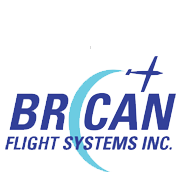


Search
|
Home » Welcome

HOW WE GOT HERE THIS REMARKABLE AIRCRAFT REPRESENTS MORE THAN 75 YEARS OF COMBINED AEROSPACE/AVIATION EXPERTISE. AND THERE’S QUITE A STORY BEHIND IT. The TD100 project began in 2010 as a concept – with co-designers Brian Eggleston (an aerospace engineer formerly with de Havilland) and Brian McLuckie (a leader in robotics, automation and aeronautics) discussing how to create a world leader in the small Unmanned Aerial Systems (UAS) category. What shape should it take? Range? Payload capacity? What composites and manufacturing techniques could maximize strength but minimize weight? wher could the best avionics on the planet be obtained? And – most pressing – how could this aircraft be forged into the gold standard for build construction, reliability, and sensor versatility? Quickly, the concept progressed from the discussion stage to the drawing board. Except there was no board. Using the latest in computer-assisted design, computational fluid dynamics, robotics and military-spec servos and electronics, the bird began to take shape. CNC-milling was used to create precision molds for the wings and fuselage. The lightest and strongest composite materials were evaluated and seleced. metal substructures were manufactured – milled directly and precisely fro the CAD models – using the lightest and strongest alloys available. All of this work took place in Canada – with a dedicated and focused team pushing their considerable skills to the limit. But the meticulous scientific work wasn’t limited to the manufacturing site. The custom-designed airfoils were put through their paces using the wind tunnel and other testing facilities at UTIAS – The University of Toronto Institute of Aerospace Studies. At every step of the way, the TD100E was pushed to perfection. The two Brians were applying the same approach, the same rigour, as if designing and constructing a passenger aircraft. The TD100E’s exceptional pedigree has now been validated on multiple sensor-carrying missions (including some we are not at liberty to disclose). The TD100E is also equipped with the best avionics available. Using the Cloud Cap Piccolo autopilot, the TD100E can be launched with a pneumatic catapult on extended missions and land with precision – all the while transmitting and capturing real-time data for post-flight analysis. There have been scientific and environmental flights in the Arctic, including demonstrations for the Department of National Defence. The TD100E has flown wildlife surveys, providing ultra-high resolution images of whales in the high north and Caribou in Labrador. We’ve carried out high-resolution mapping surveys with partners Applanix and FLIR to detect hot-spots following a Petawawa forest fire. Our demonstration at the Abbotsford International Airshow resulted in Lt. -General Yvan Blondin, Commander of the Royal Canadian Air Force inquiring about possible defence applications for the TD100E. Now, all of this work is paying off – and things are moving at a vastly accelerated pace: The TD100E has qualified for Defence Industrial Research Program Funding, which will assist in preparing and testing the UAS for an anti-submarine detection role off Canada’s coasts, using CAE magnetic anomaly detection sensors (MAD-XR). The National Research Council in Ottawa has named the aircraft its “Platform of Choice”. And we continue to push ahead. In a partnership with the University of Victoria’s Centre for Aerospace Research(CfAR), the TD100E is being put through a series of punishing tests we are confident will validate it as meeting “Best Practice” standards – meaning, essentially, it has the same quality of build as a passenger-carrying aircraft. An outstanding sensor platform, the TD100E is also integrated with the best avionics available. You’ll learn more about our sophisticated electronics, sensor partners, and accurate landing system on our Sensors page. If you’re into specs, you’ll find plenty there to impress you. But don’t just take our word for it. Recently, Brican Flight Systems was approached by the Canadian Aviation and Space Museum. Its curator has asked us to donate our very first TD100 for display. We are honoured to do so, and for Canadians to see this milestone of Canada’s unmanned aviation future. [Detailed introduction] |
